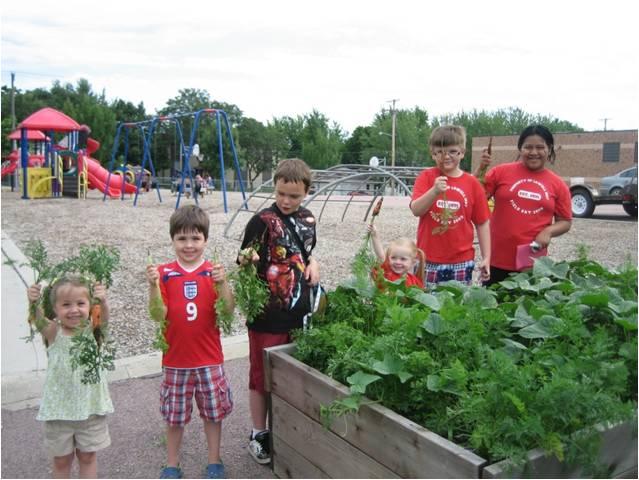
Written by Chris Zdorovtsov (Former SDSU Extension Community Vitality Field Specialist).
If considering a garden-based learning program for four to five year-old it is important to understand some of their developmental characteristics prior to planning your program. Young children’s abilities will differ greatly from older youth.
Four to five year-olds will have limited knowledge of the garden, and will likely need to be introduced to the subject. Allow them to practice or repeat simple tasks such as watering using small watering cans or harvesting red tomatoes. They will also be interested in looking at and touching insects in the garden. If planting seeds, begin by laying out the larger types of seeds and allow youth to bury them or push them into the ground. Youth with become frustrated if they are asked to lay out small seeds in a row. If small seeds are being utilized allow youth to scatter the seeds, in a broadcast planting manner. Radishes are ideal for this, as they can be planted close together and thinned later. They also offer that instant gratification, as they come up in 3-4 days.
Four to five year-olds possess some complex motor skills that combine large and small muscles, but they will still have difficultly using tools. They will show right or left hand dominance by this age. Purchase child-size tools if possible. Select durable plastic tools verses metal tools, to avoid accidents. It will be important to have lots of tools, such as multiple miniature watering cans, so that they can all participate.
Remember children this age and like to run, skip, and gallop around. A great time to get young child involved would be prior to planting. Allow the kids to engage in digging and raking of the space prior to any plants being put in the ground. After planting maintain defined pathways between rows of plants. When the garden is getting started it is very difficult for children this age to stay on the path and small plants often get trampled. This age group will likely get dirty, so allow for plenty of clean-up time.
Young children have a short attention span, so make sure you have a list of activities that will keep them involved, from digging holes, to searching for insect, to watering plants or picking vegetables. Finally, remember that showing something in the garden versus an explanation will have more of an impact. Finish by reinforcing what was seen. Talk about who did what, what was seen or what it looked like. Another possibly to help reinforce is to have the children draw a picture of what they saw that day.


